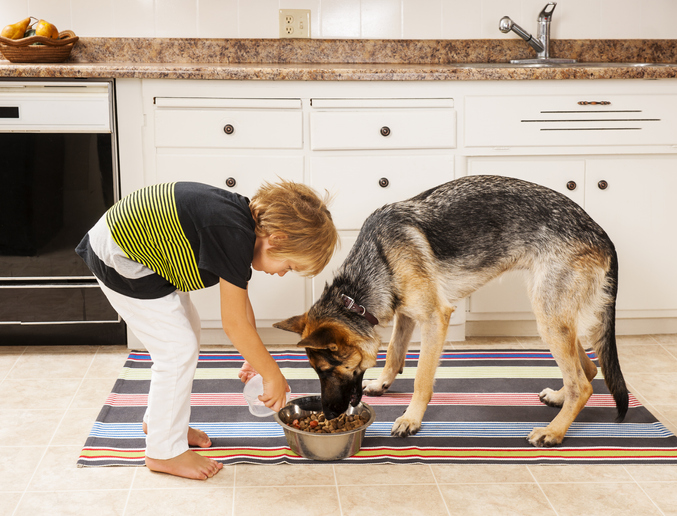

How Pets Teach Children Responsibilty
Teaching your children to take care of a pet is a great way to teach them responsibility. You should consider your child’s age and the specific pet, but there are many ways that your child can grow from helping raise an animal.
How Pets Teach Children Responsibility
Very young children may still be too busy achieving their own developmental milestones to take on even one full responsibility involving a pet. But once they get a little older, they can start helping care for the household pets in big ways. This not only helps teach responsibility but also takes some of the burden off you.
Pets for Young Children
Once you deem that your child is ready to care for the family pet, you should have a conversation with them. Tell them that one or more tasks of caring for the pet will be their responsibility. It’s important that you include your child in tasks that may not be their responsibility, but maybe one day.
An easy task for a small child to complete that offers no danger is to make sure the pet’s water is freshened each day. This simple task is easy to work into your child’s schedule and offers basically no risk other than an accidental spill.
You also want to meet your child where they are. You’re trying to teach them to be responsible, but learning anything happens in small steps. If they don’t already have household chores to complete, this may be a new step for them. The incentive of playing with a loving pet is a pretty good one, but you’ll still want to make sure you don’t overwhelm them with tasks. Take it slow, and your child will learn at their own pace.
You can also have your child assist with a task. For instance, something like grooming a dog is easy. Grab a brush and tell them you want them to help you. Show them how to brush a dog properly and ask them to practice with you. This hands-on learning is great for children, and you’re also preparing them for tasks they may have to do themselves in the future.
Pets for Older Children
If your family is considering getting a first pet, it’s very important to include your children in the conversation. You should also ask them what kind of pet they want. Whether it’s a cat, dog, or guinea pig, adding another living creature to your home is a big deal. Having your child help in the decision-making process lets them feel like it is their responsibility as well.
Before getting a new pet though, you should help your child research what the pet may be like. Jump on the computer and do some research with them or watch videos about what caring for the pet will look like. Ask about what kinds of responsibilities your child would be willing to take. If your child wants a pet but is not willing to commit to helping, it might not yet be time for a pet.
How can Children Help?
Depending on your child’s age, they should be able to help out in different ways. For example, a child who is under five years of age should be able to help with some grooming tasks, help pick up after a pet, and even help feed them under adult supervision.
A child of elementary school age should be able to:
- Measure and give food with adult supervision
- Clean and maintain the pet’s area.
- Clean and bathe the pet based on its size.
- Help exercise their pet with adult supervision.
- Clean up when the pet goes potty. This should still be supervised to make sure healthy hygiene habits are developed as well.
Once a child is over ten years of age, they should be able to do pretty much everything to take care of a pet. You still may have to supervise some activities depending on what pet you have or their size, but an older child can safely do all chores related to their pet.
How to Address Lack of Responsibility
Remember that using a pet to teach responsibility is a secondary benefit to pet ownership. You should first want to care for a pet and using a pet to teach your children is a bonus. If you’ve discussed with your child their responsibilities when it comes to the pet, it would be nice to be able to rely on them.
When your child doesn’t meet your expectations when it comes to care, be sure to gently instruct them on how to be better. Make sure you tell your child what you expect from them and let them know they can tell you when they are having difficulties. Your gentle reassurance will go a long way in teaching your child that the work they do is important.
You should also be helping to take care of your dog as well. One of the best ways to show your child how important their tasks are is to do them yourself. By showing that you’re willing to do “their” chores, you’re showing that the work they do is important.










